Girls Can! Crate is a monthly subscription box that inspires girls ages 5-10 to believe they can be and do anything by introducing them to fearless women who made the world better.
Each box will include a 20-page activity book telling the featured woman’s unique story (as well as games, experiments, & more), 2-3 hands-on STEAM (science, technology, engineering, art, and math) activities related to her field, a creative play prop, a featured character trait that helped her succeed and 2-3 practical tips for parents to easily foster that trait, and more. The boxes are designed to encourage a love for STEAM, to foster creativity, curiosity, and support literacy development. With every box purchased, Girls Can! Crate donates 10% of the proceeds to nonprofit organizations working to empower women and girls.
Disclosure: I received this box for review purposes. I was not compensated in any way. All opinions are my own. Post may contain affiliate and/or referral links.
Subscriptions are $29.95/month or less with multi-month commitments. Shipping is free within the US. — For a limited time, you can save 20% on your first month with coupon code “WELCOME20“!
Let’s see what’s in my July 2020 Girls Can! Crate!
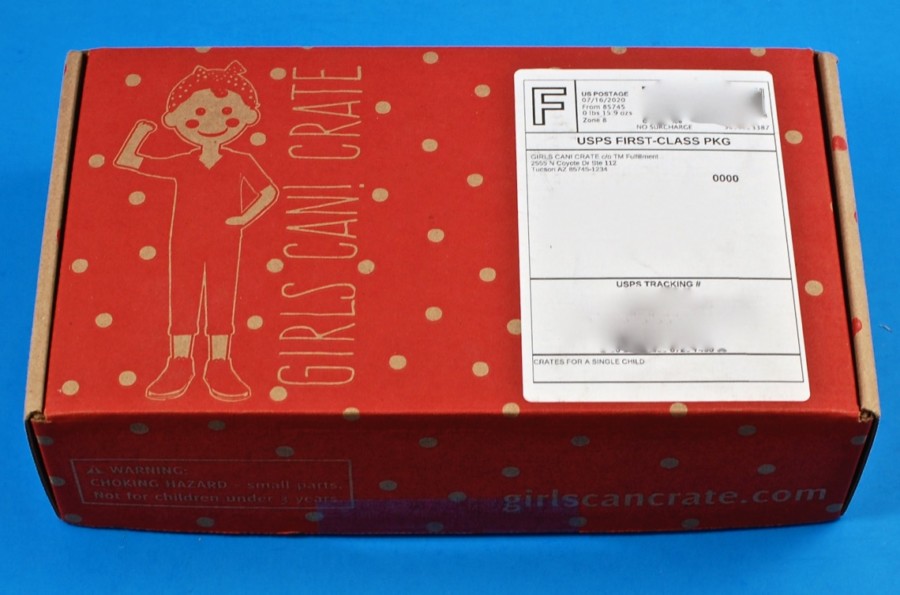
Everything was shipped in a bright red box with the Girls Can! Crate logo on top.
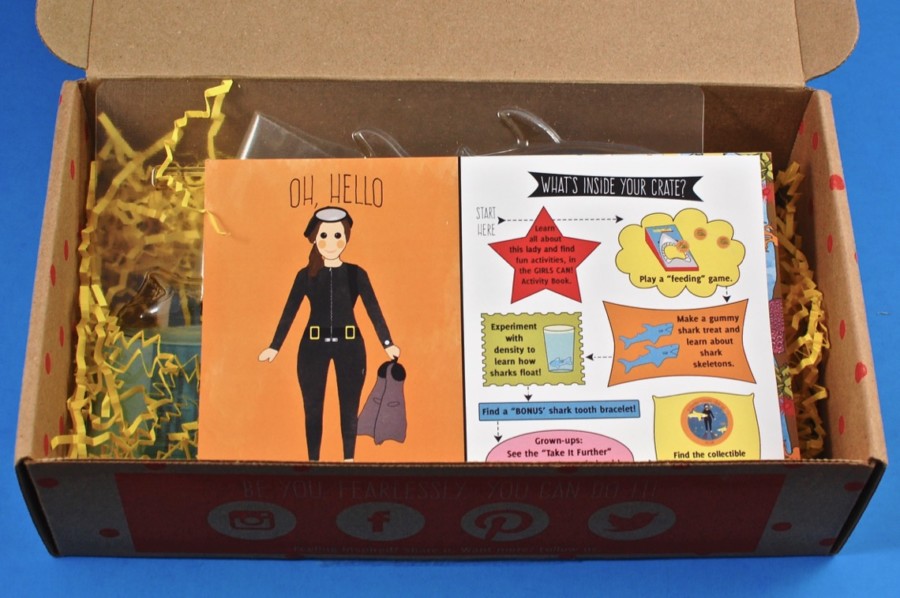
A peek inside!
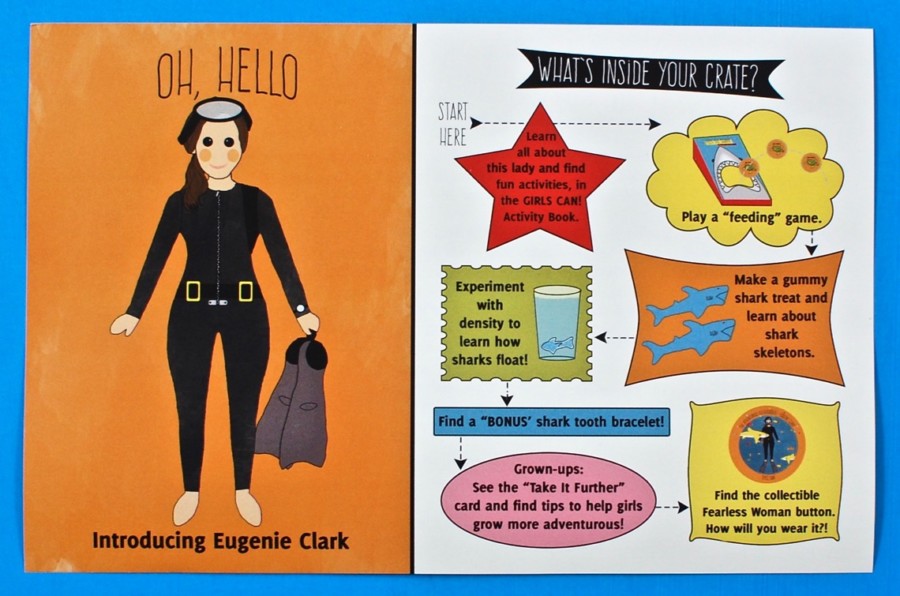
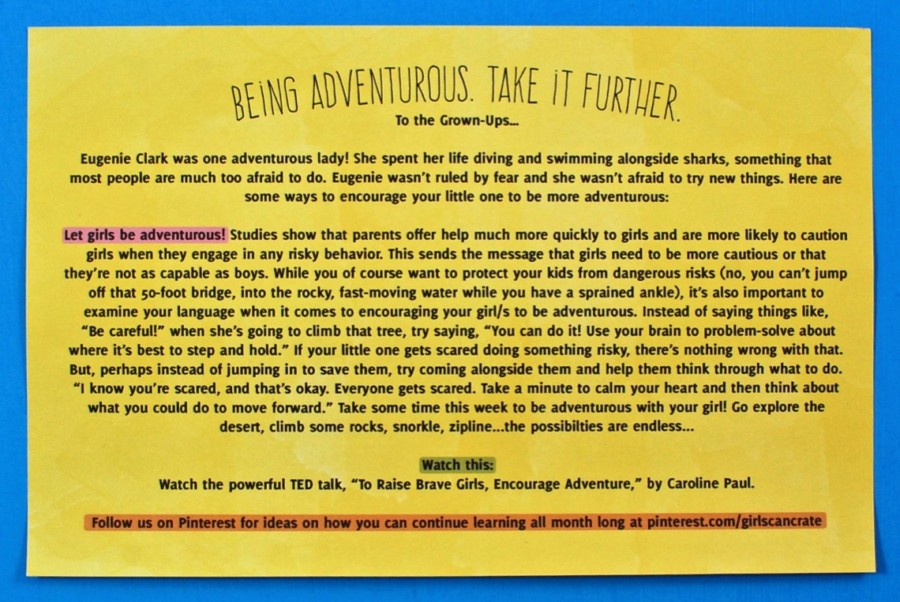
July’s featured “fearless woman” was Eugenie Clark — the adventurous ichthyologist who greatly contributed to people’s knowledge of sharks and worked tirelessly to improve sharks’ reputation in the public eye. An information card listed all of the activities in the crate and the order in which they should be completed. The reverse side included tips for parents to encourage their girls to be just as adventurous as Eugenie.
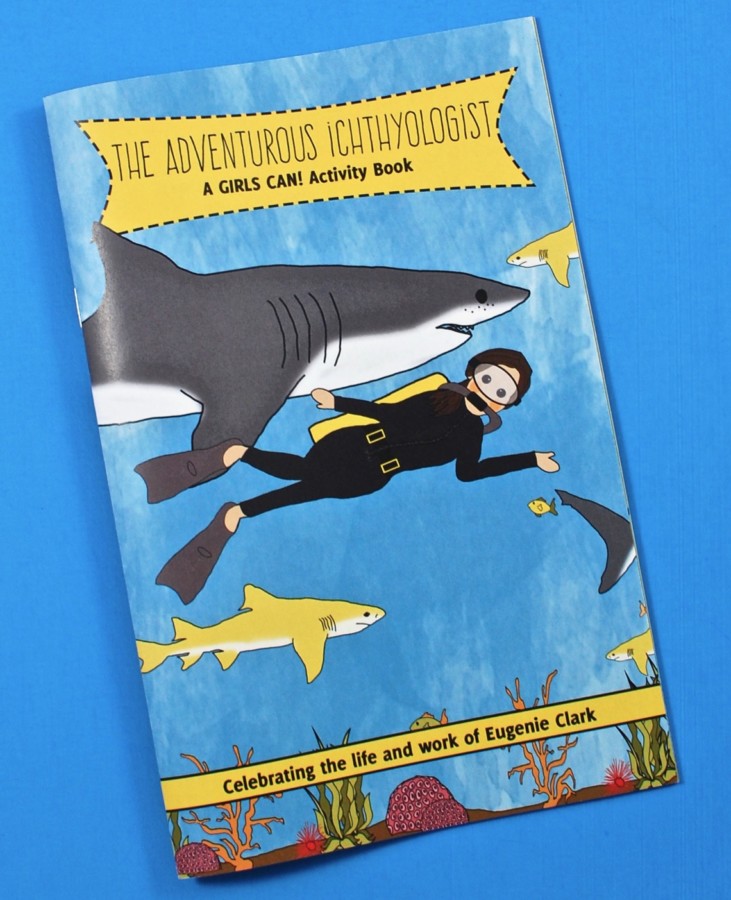
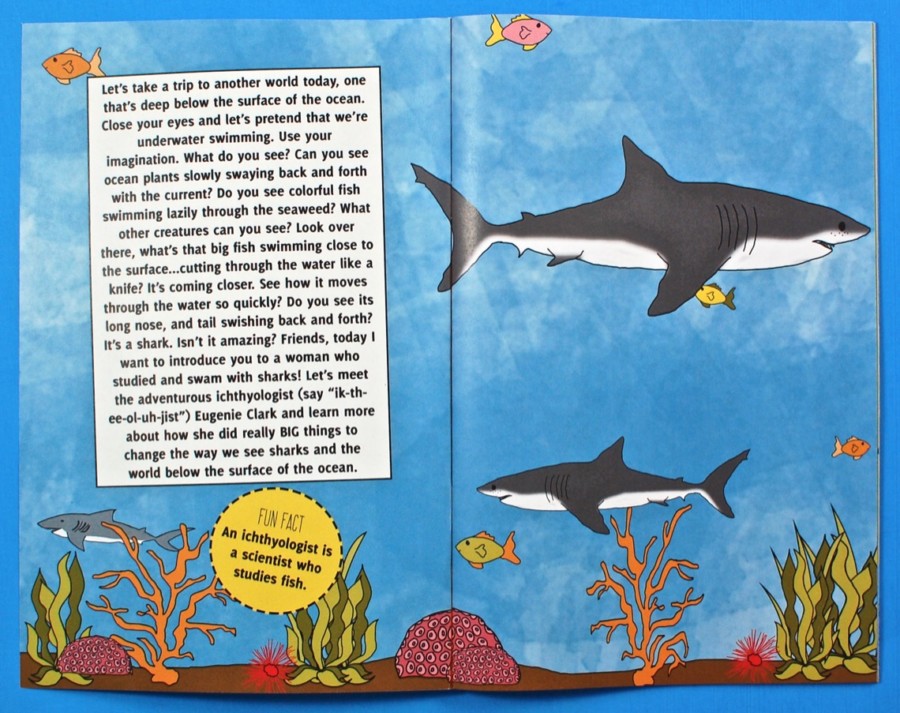
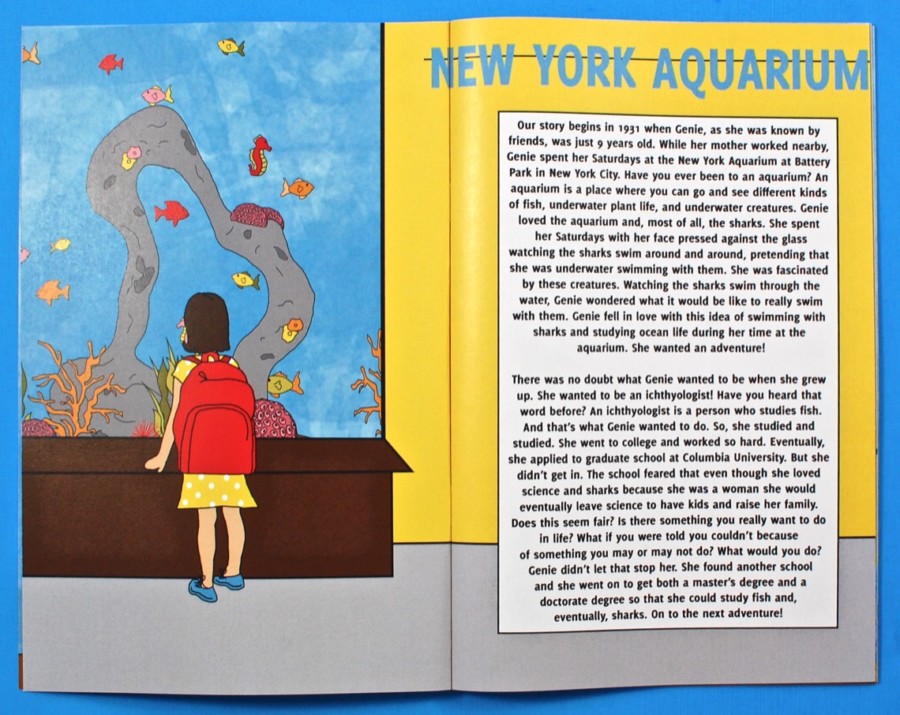
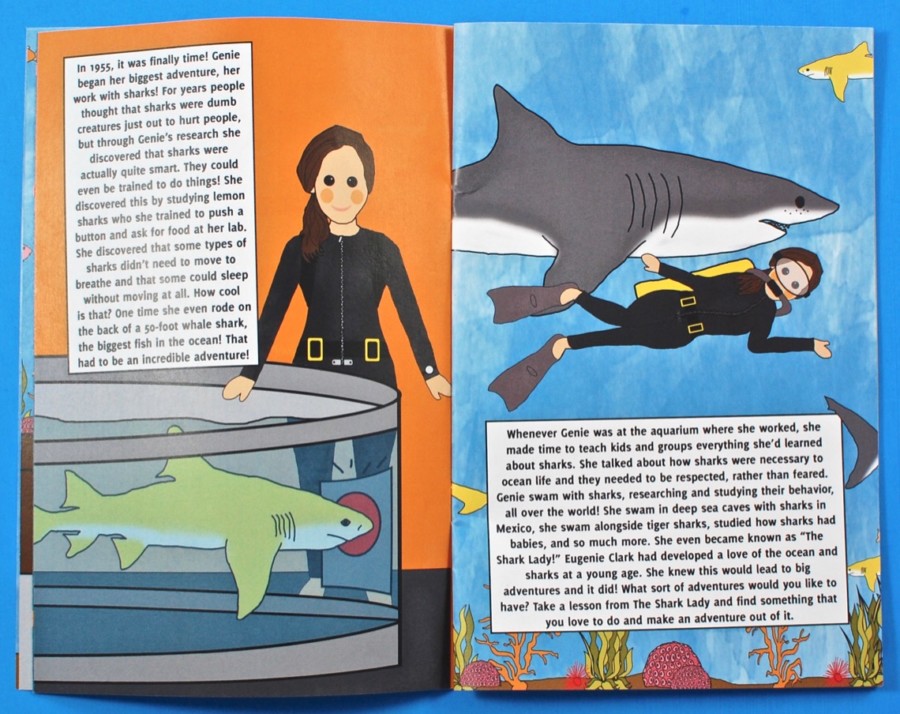
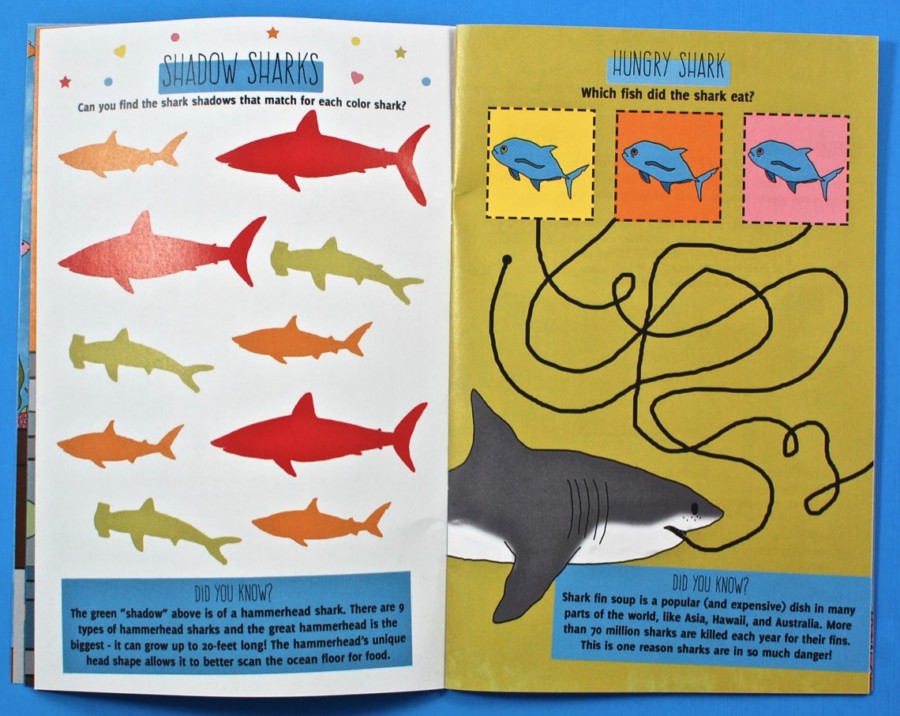
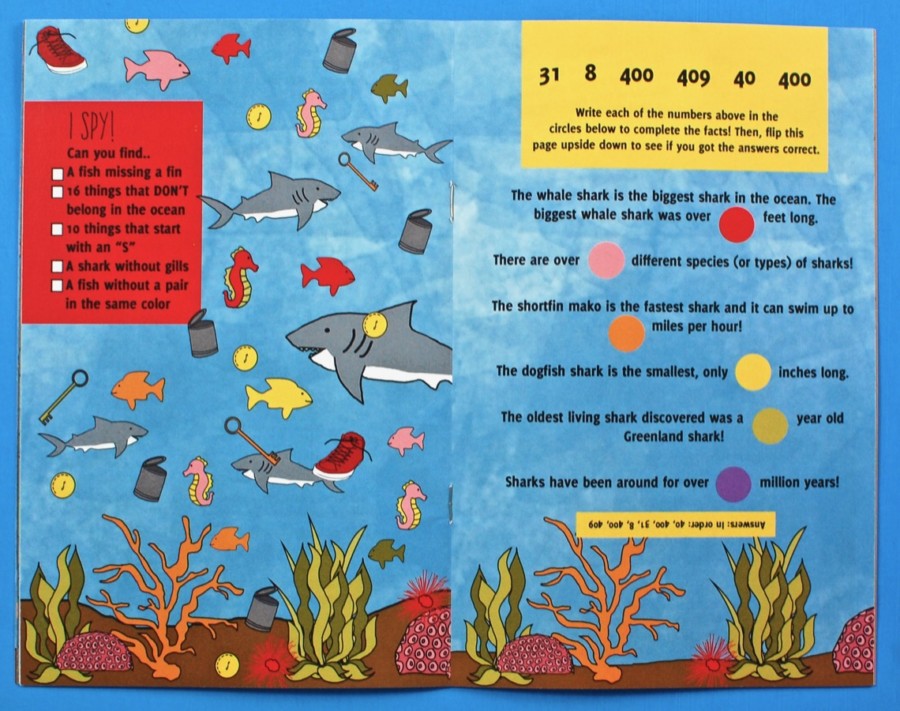
Activity Book
A 20-page, full color activity book included the story of Eugenie Clark and how she was able to overcome many obstacles to become a well-respected ichthyologist. It also included puzzles, games, experiments, and more. All of the activity instructions were printed in the booklet as well.
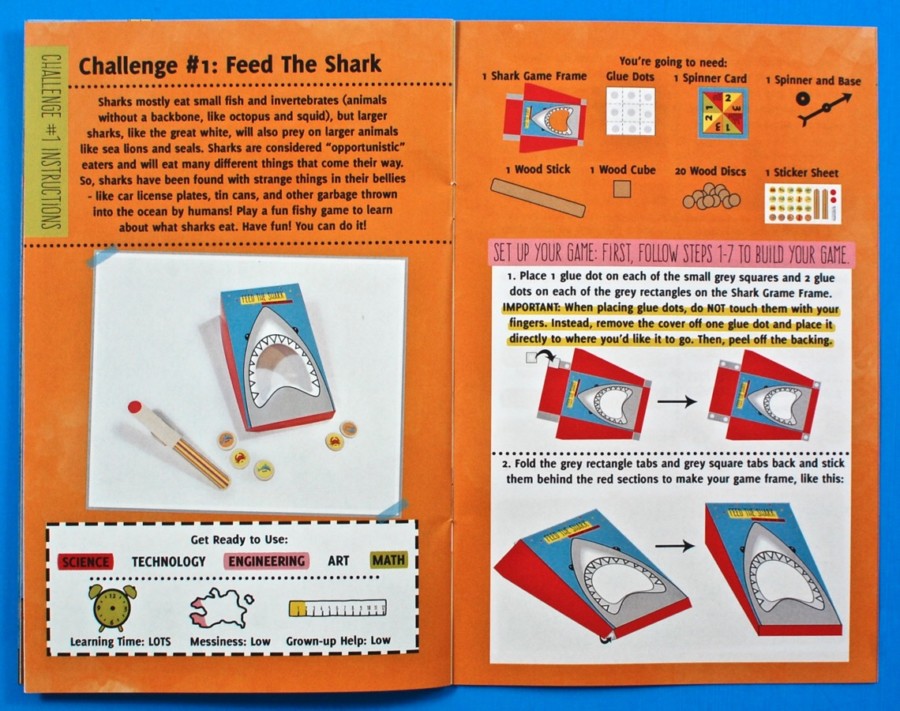
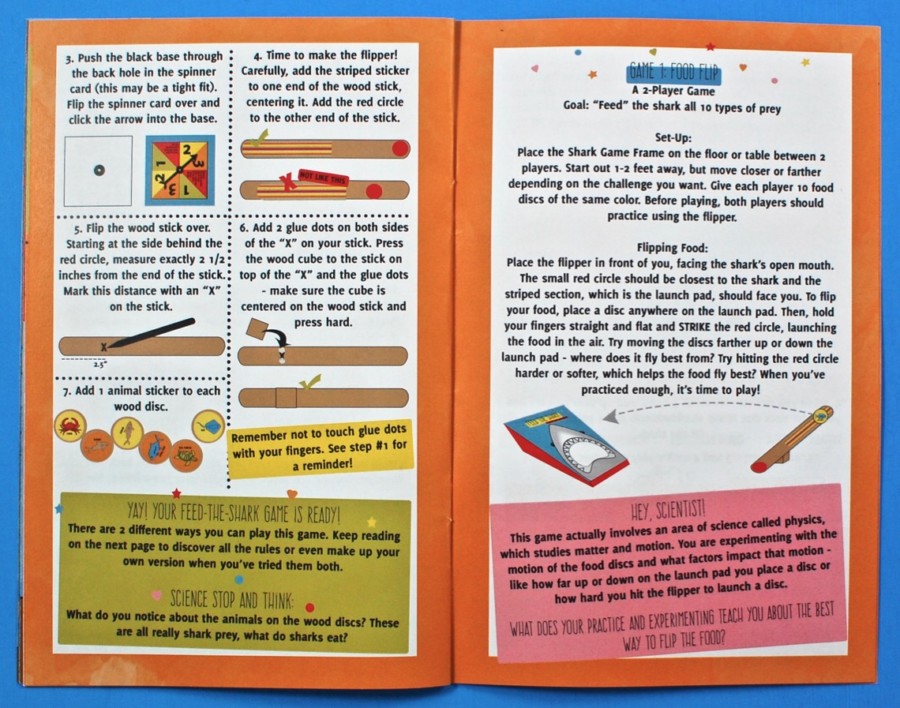
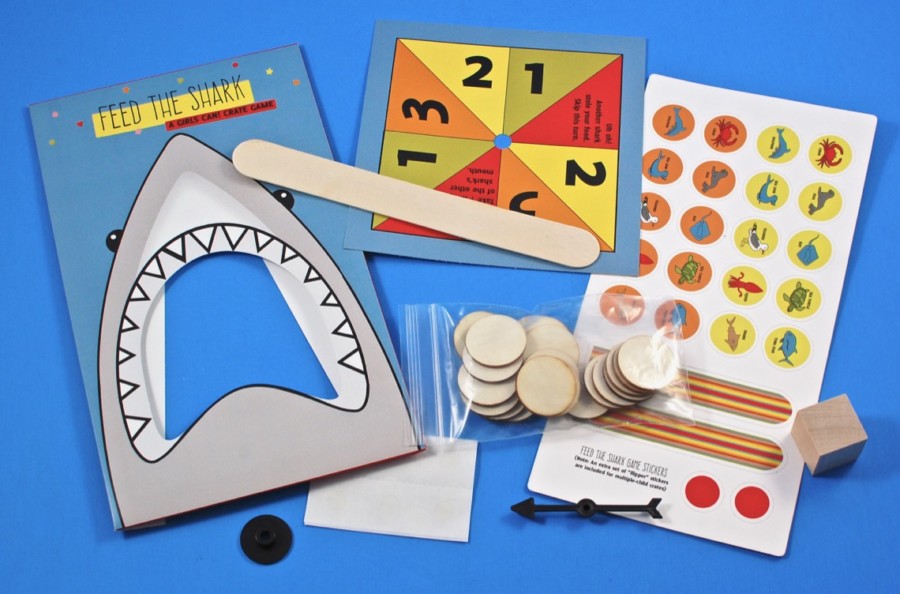
Challenge #1: Feed the Shark
The first activity had us building a “feed the shark” game. Materials included a shark game frame, glue dots, a spinner card, spinner & base, wood stick, wood cube, 20 wood discs, and a sticker sheet.
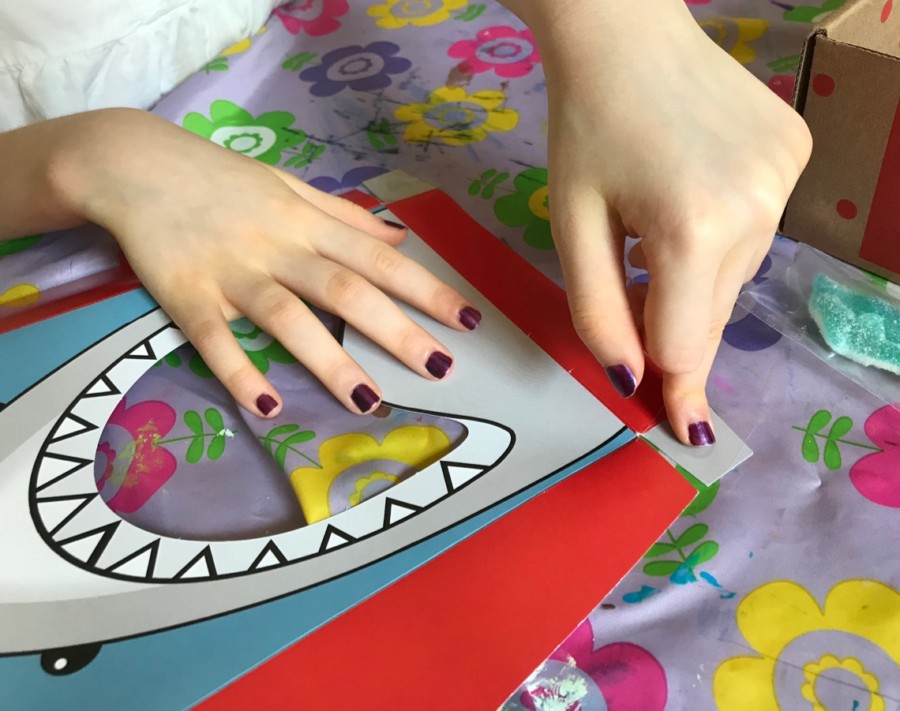
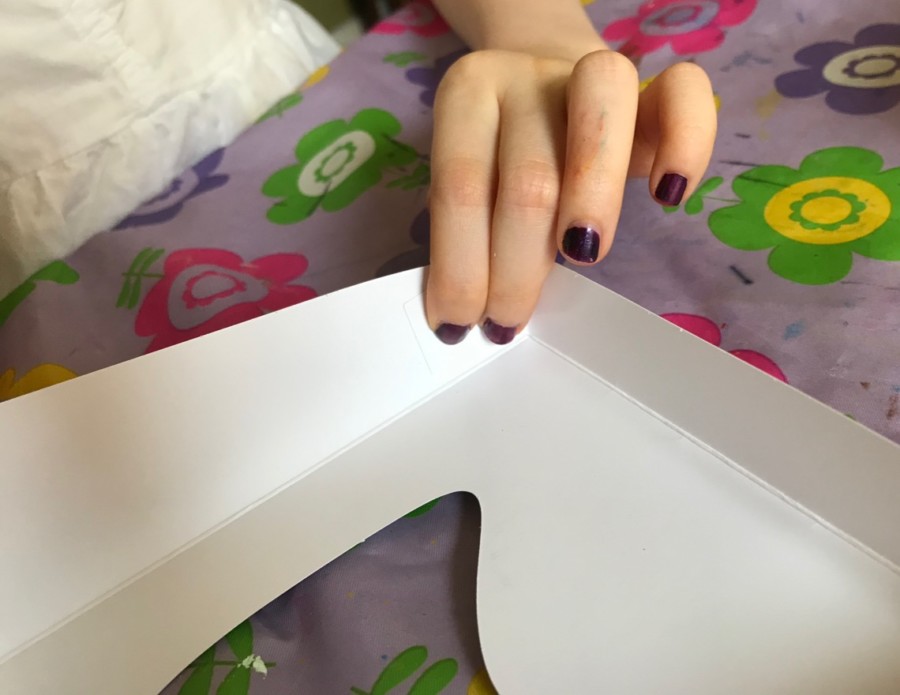
The first step was to build the frame by folding the edges and securing them at the corners with glue dots.
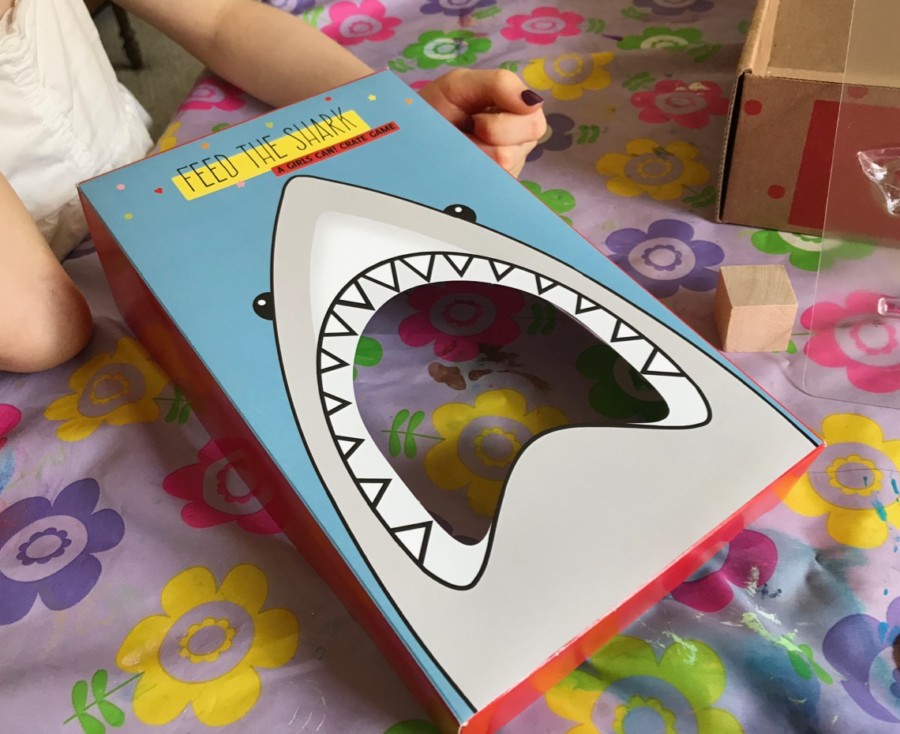
Done!
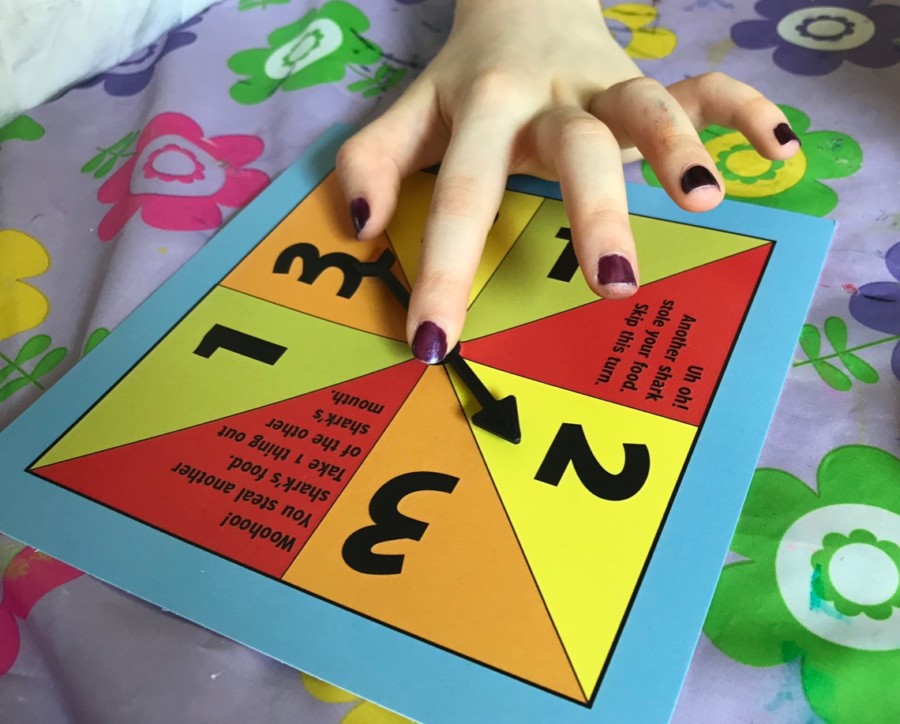
Next, we assembled the spinner by securing the plastic arrow into the hole on the card.
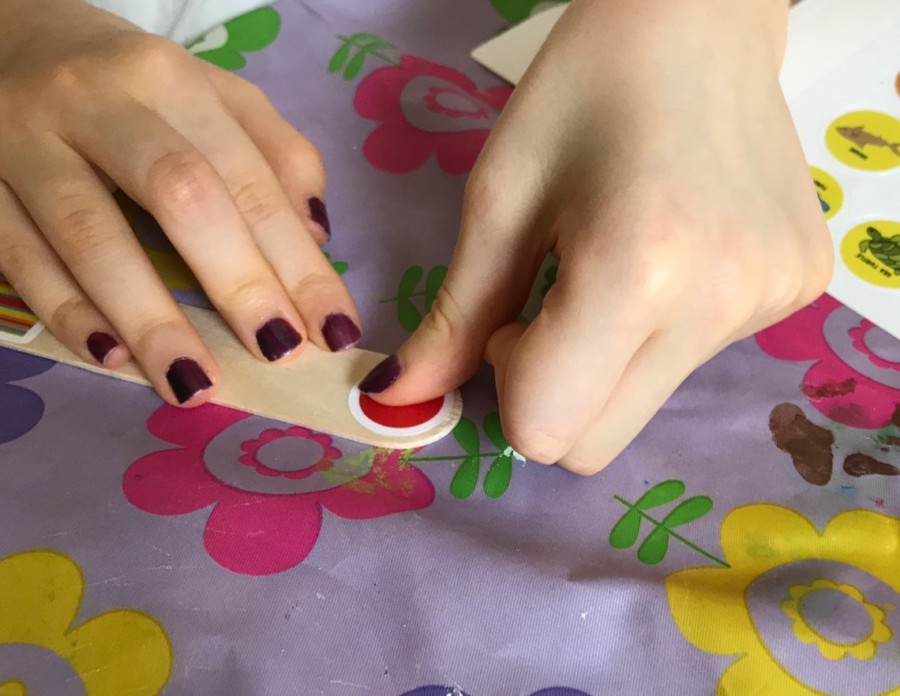
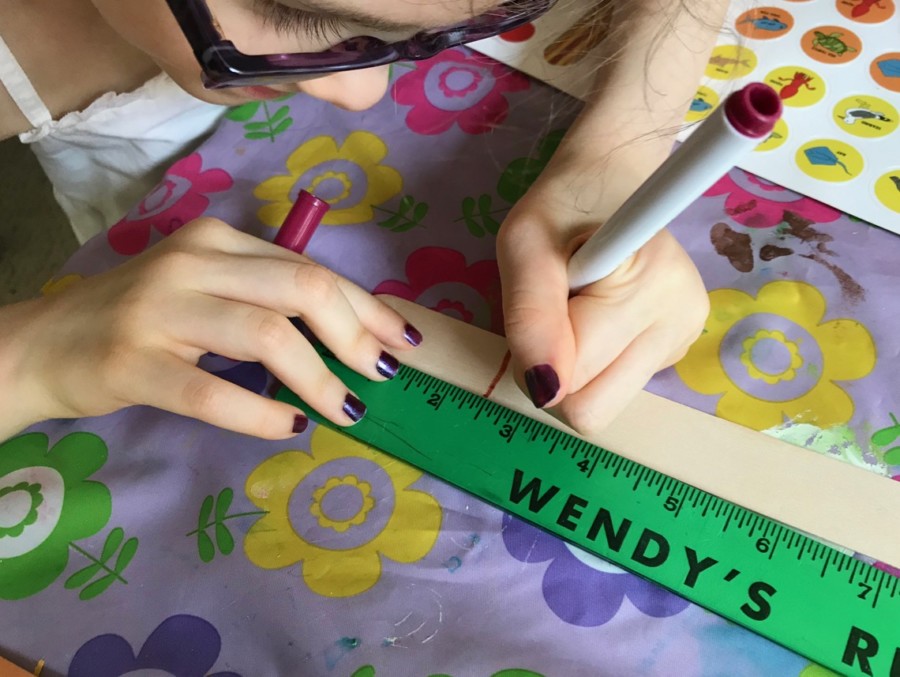
We then placed stickers on the “flipper” (wooden stick) and measured the spot where the wooden cube would need to be attached. (I’ve had that ruler since elementary school. 😉 )
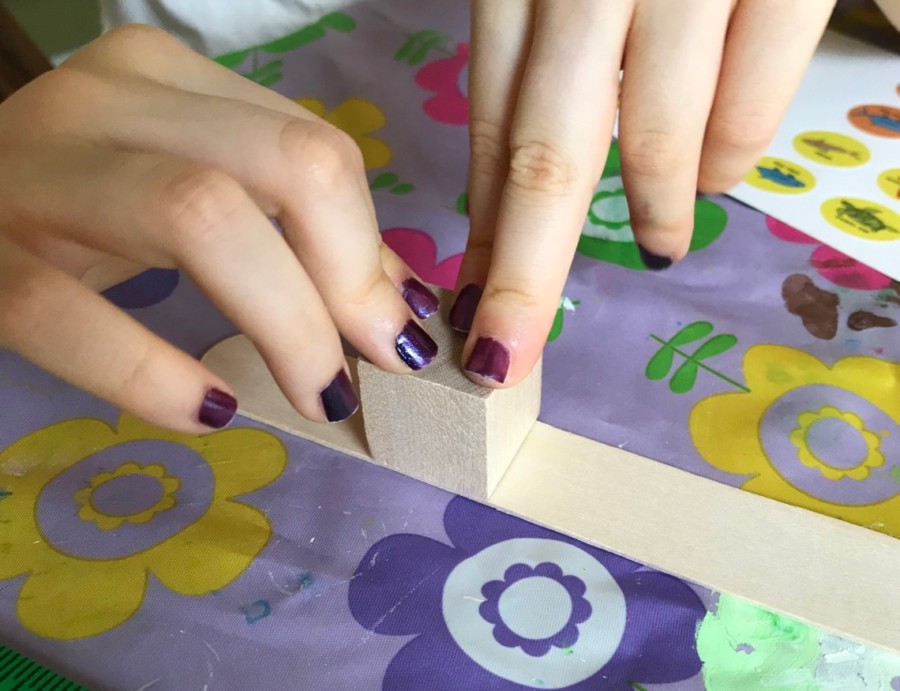
The cube was secured with two glue dots and the flipper was complete.
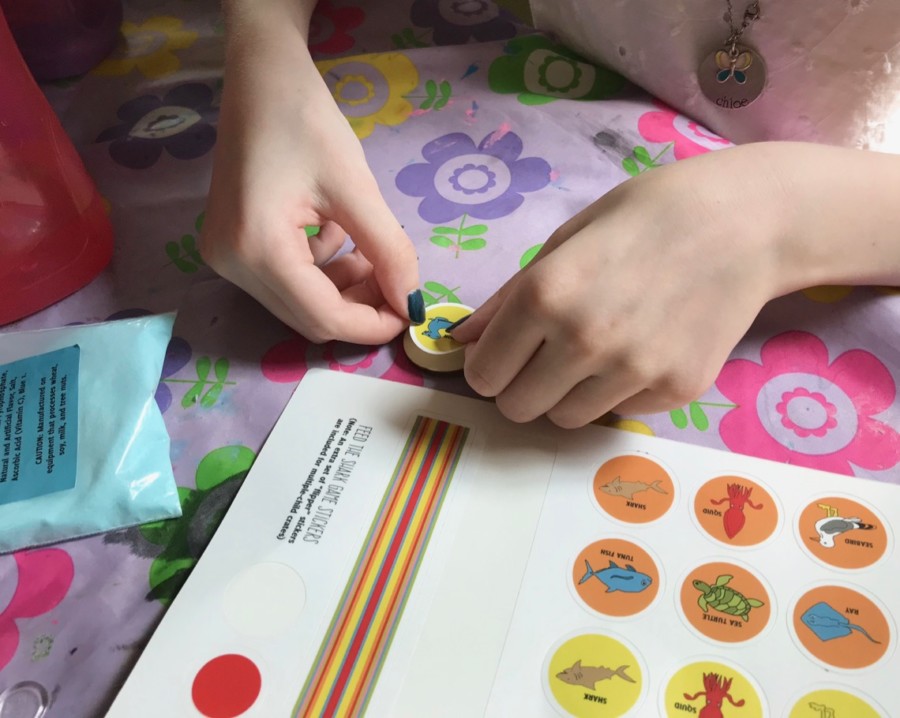
The last step was to place a sticker onto each of the wooden discs to make the shark’s “food”.
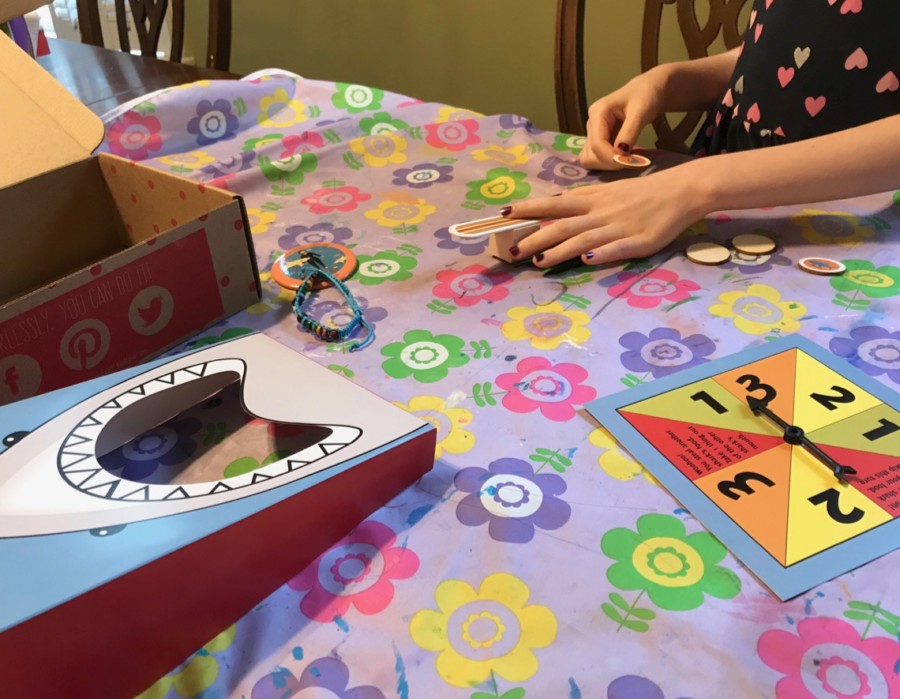
The object of the game was to use the flipper to get all of your “food” into the shark’s mouth. The spinner determined how many discs you could flip on your turn. As simple as it sounds, it was NOT easy! Those little discs really didn’t want to get eaten. 😉
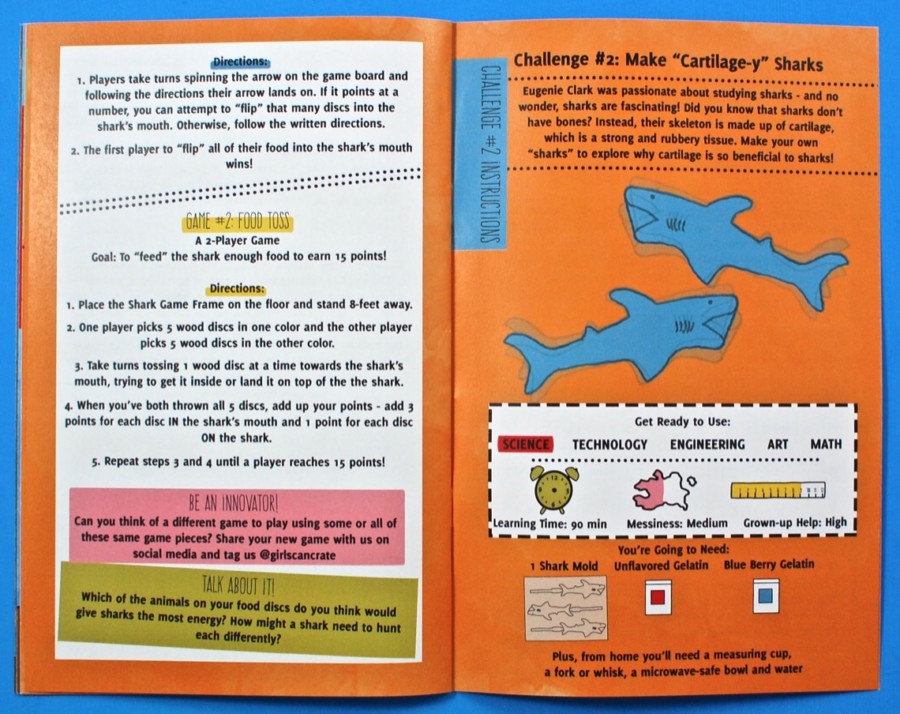
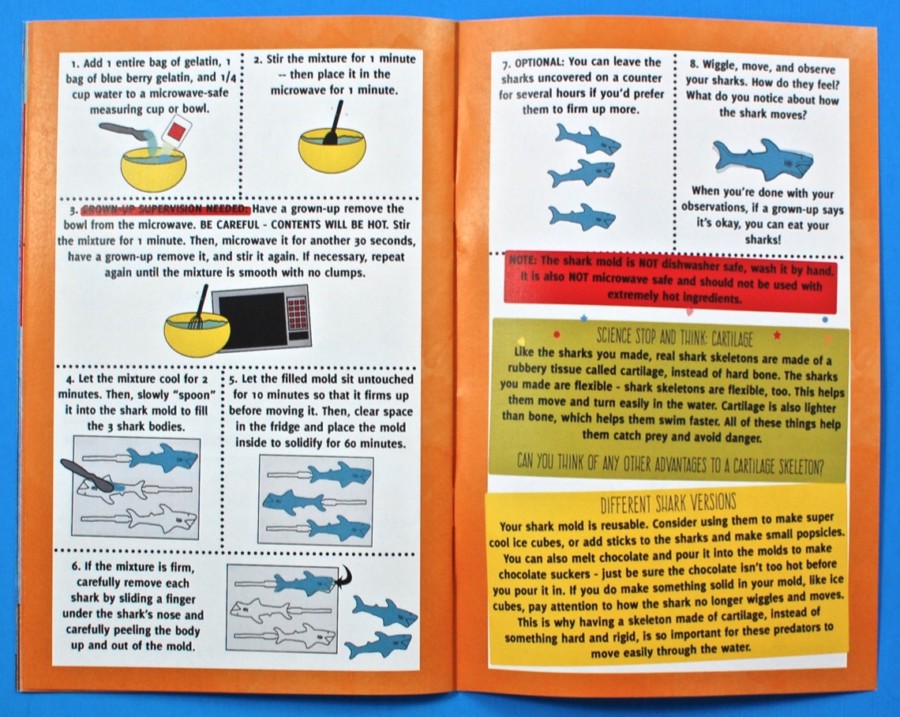
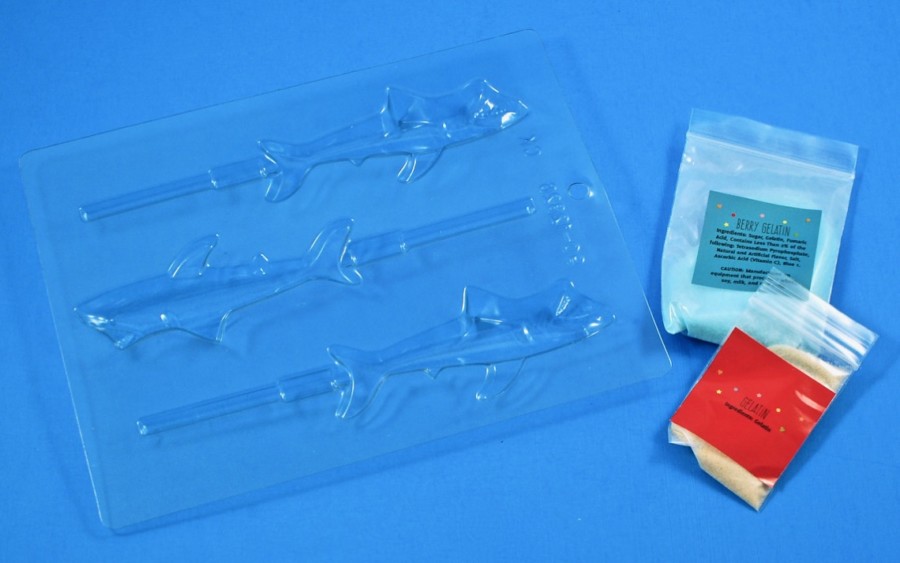
Challenge #2: Make Cartilage-y Sharks
The second activity was to make our own gelatin sharks to see how a body made of cartilage feels. Materials included a shark mold, unflavored gelatin, and blueberry gelatin.
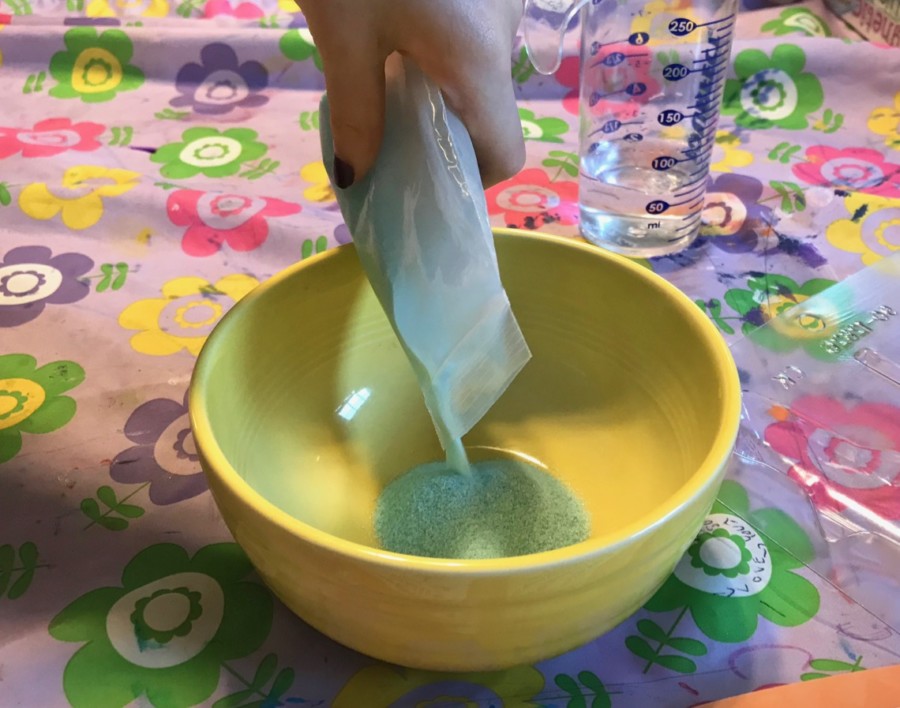
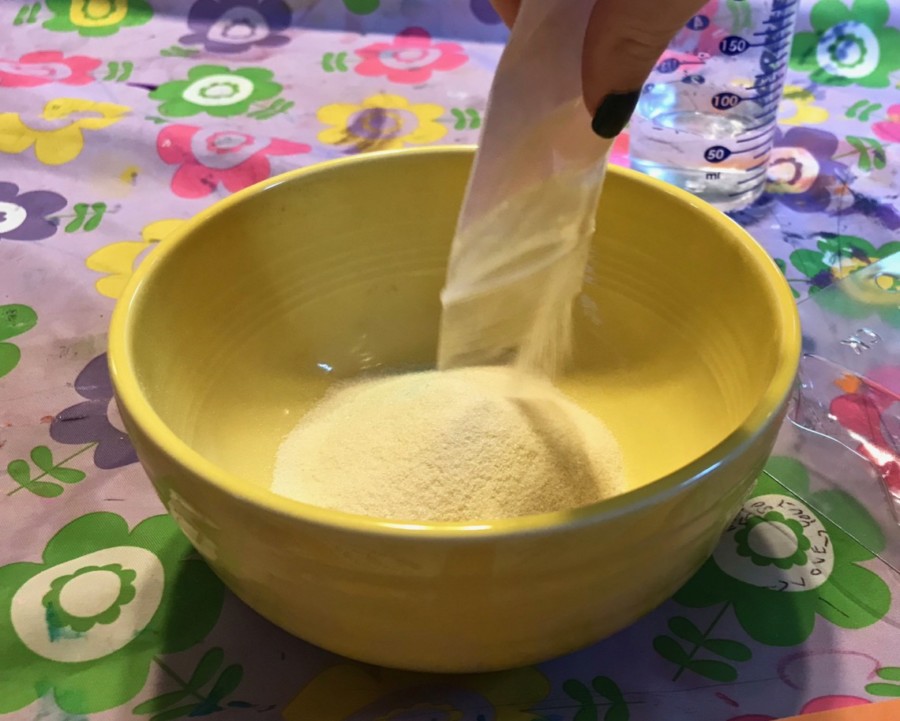
The first step was to pour both the blueberry and unflavored gelatin into a bowl.
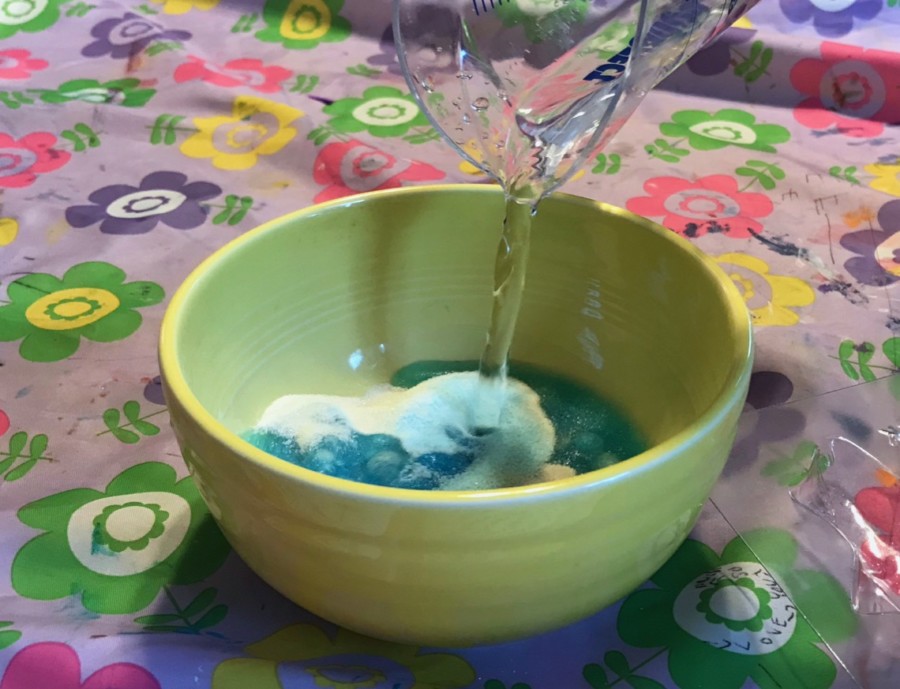
Next, we poured in 1/2 cup of water.
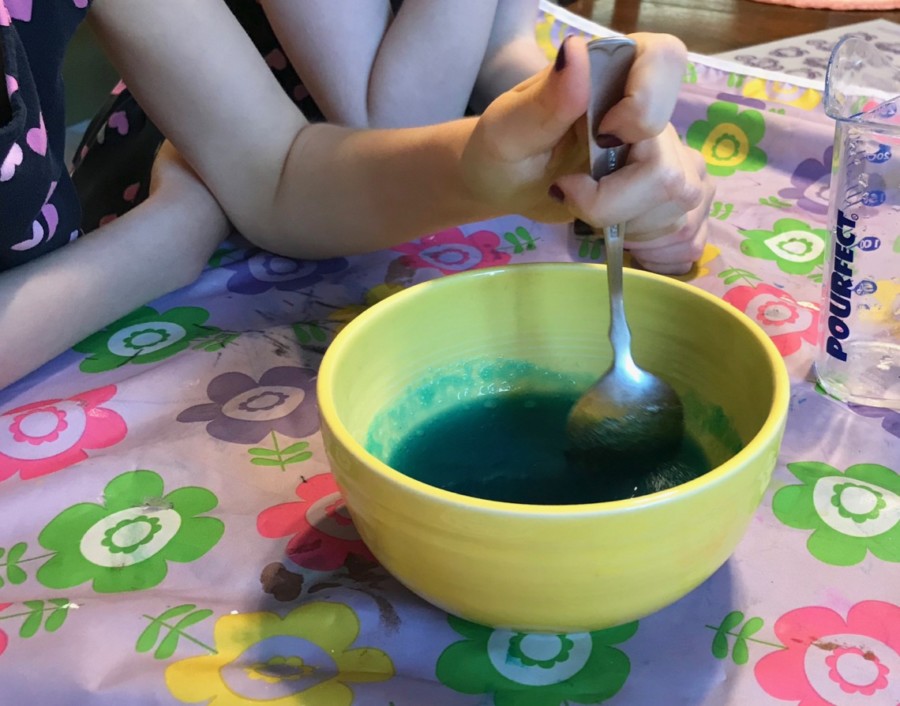
The mixture was stirred for about 1 minute and then microwaved until no lumps remained.
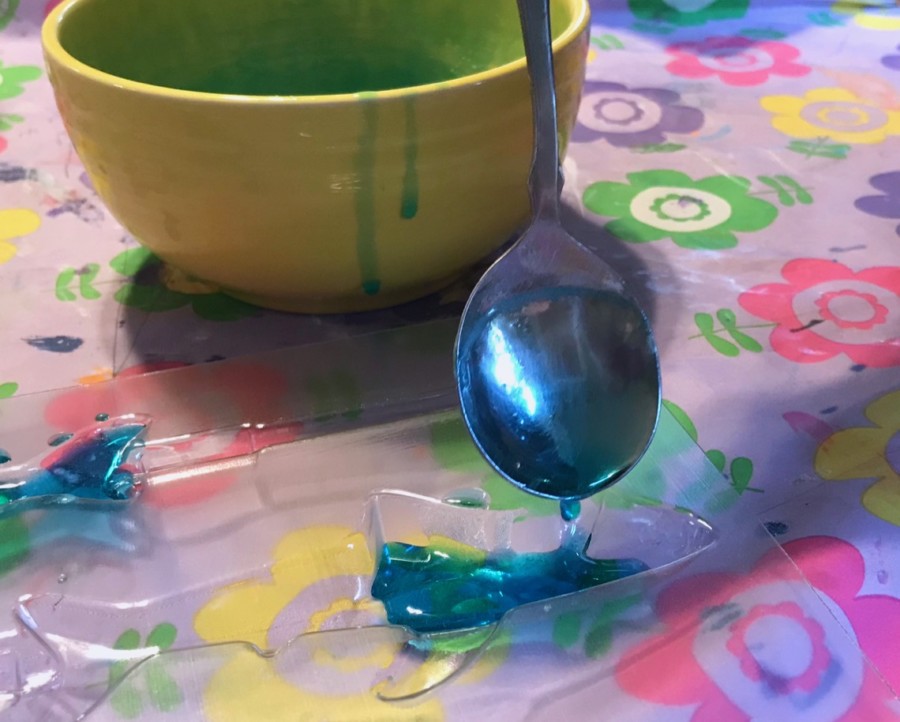
After letting it cool for a few minutes, we spooned the mixture into the shark molds and let them solidify overnight in the fridge.
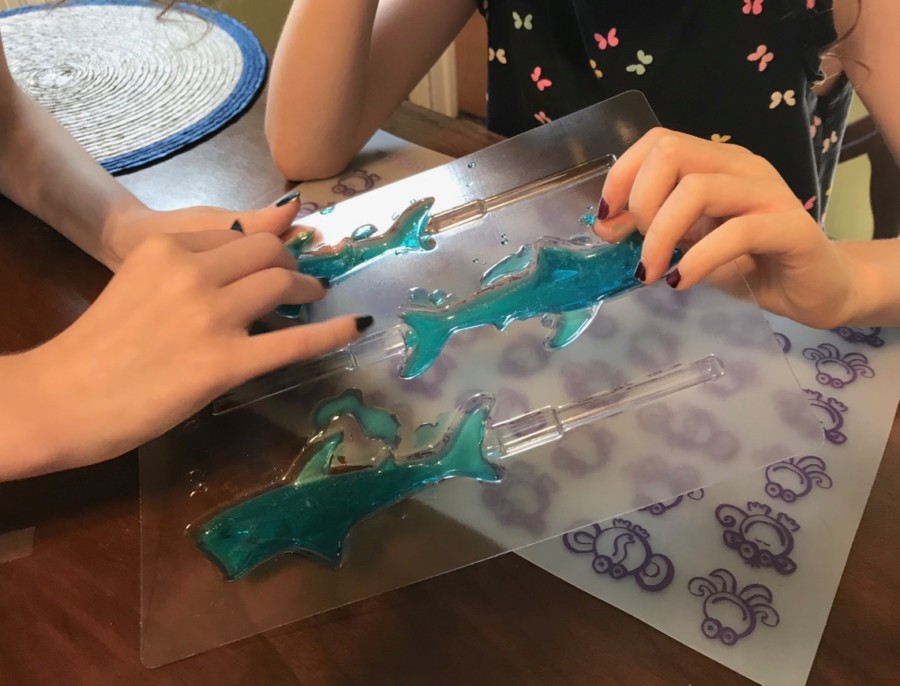
The next day, we removed it from the fridge and popped the sharks out of the mold.
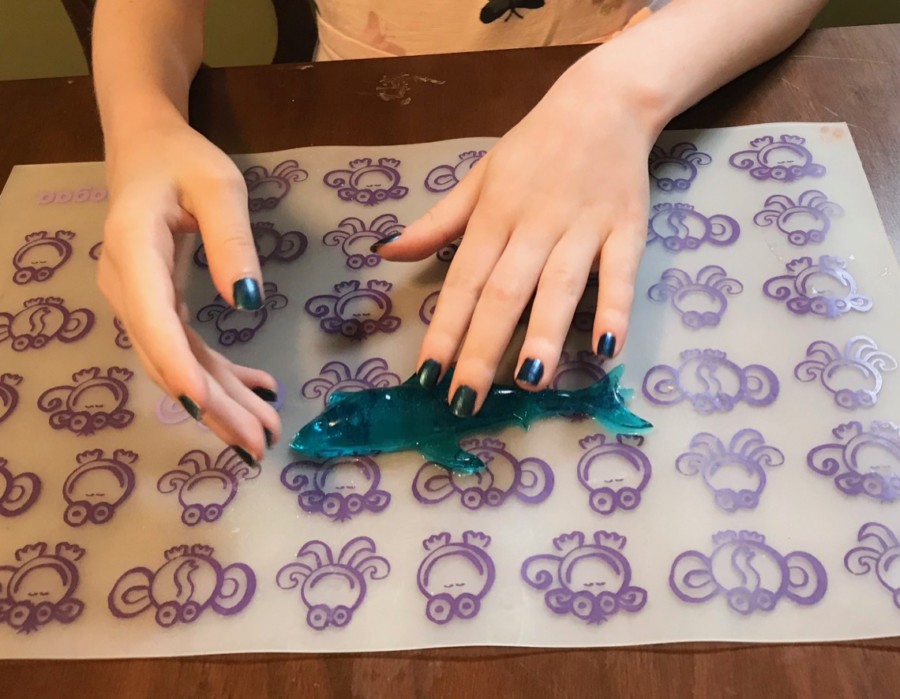
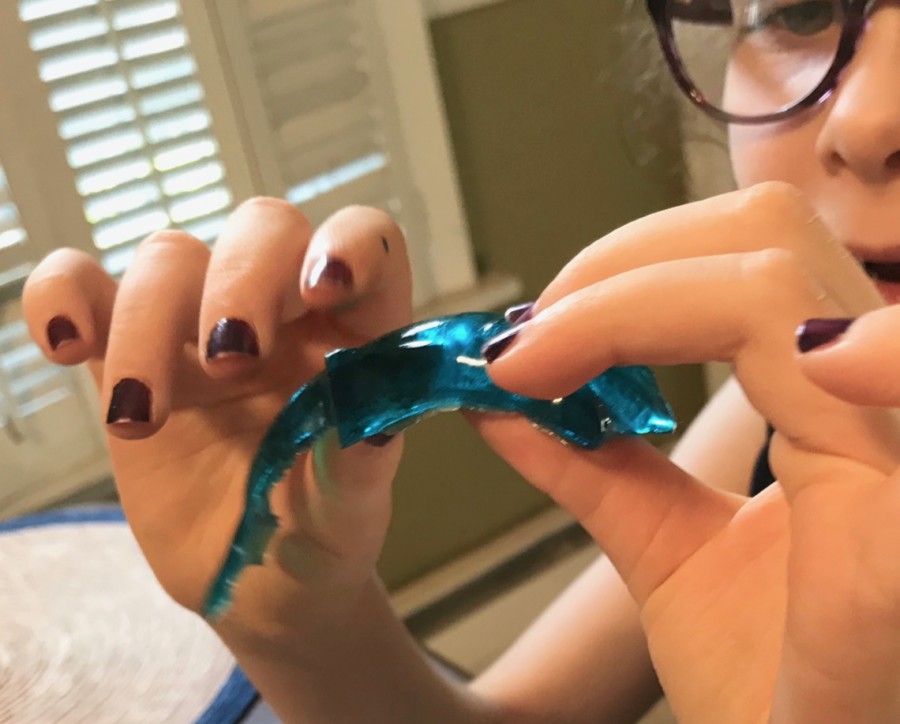
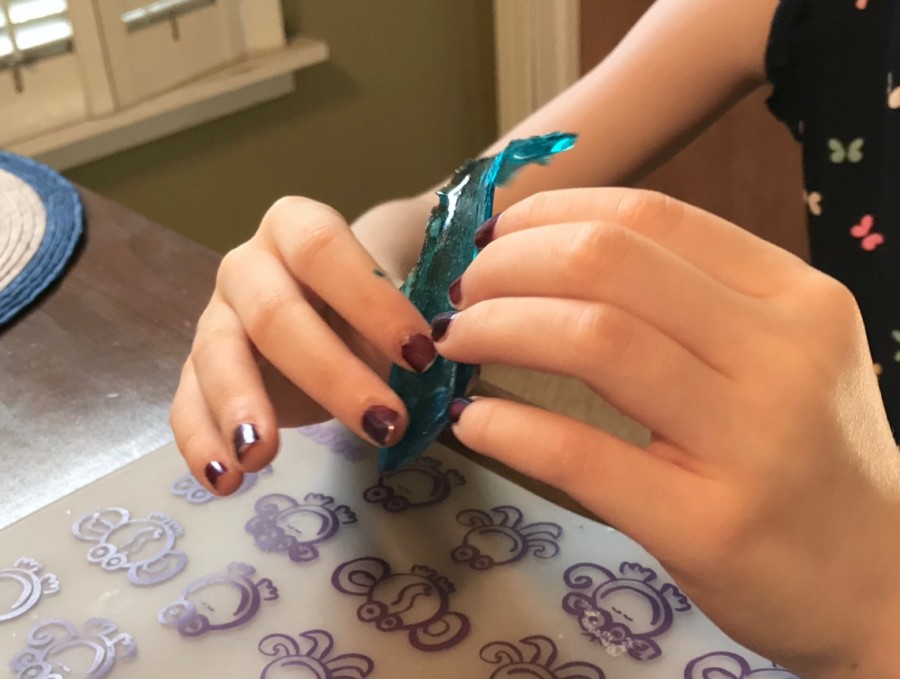
The girls had fun observing the “wiggly-ness” of the sharks and seeing how not having bones makes them so much more flexible.
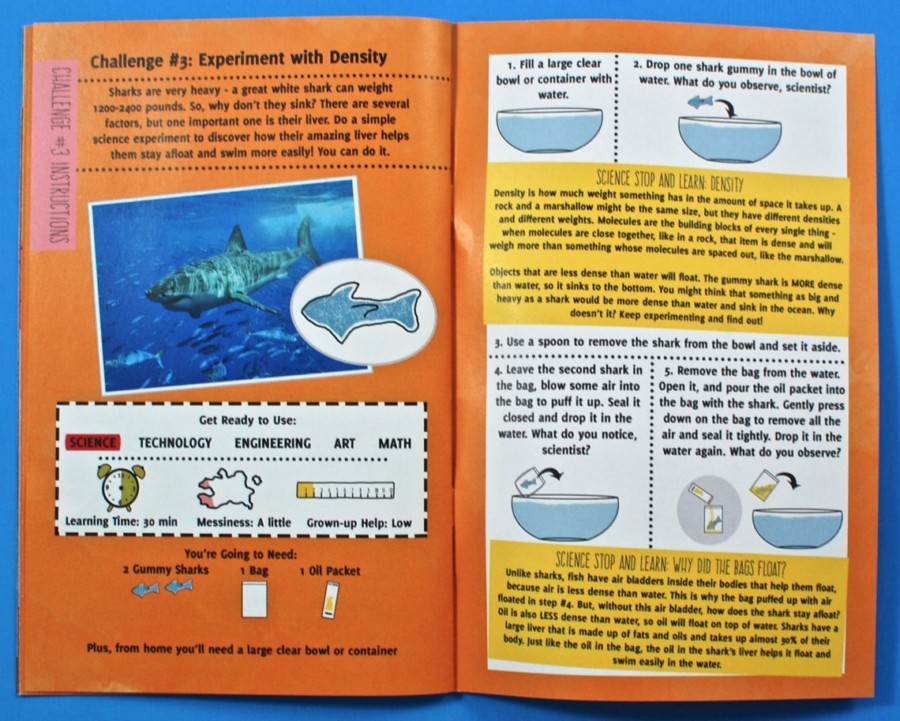
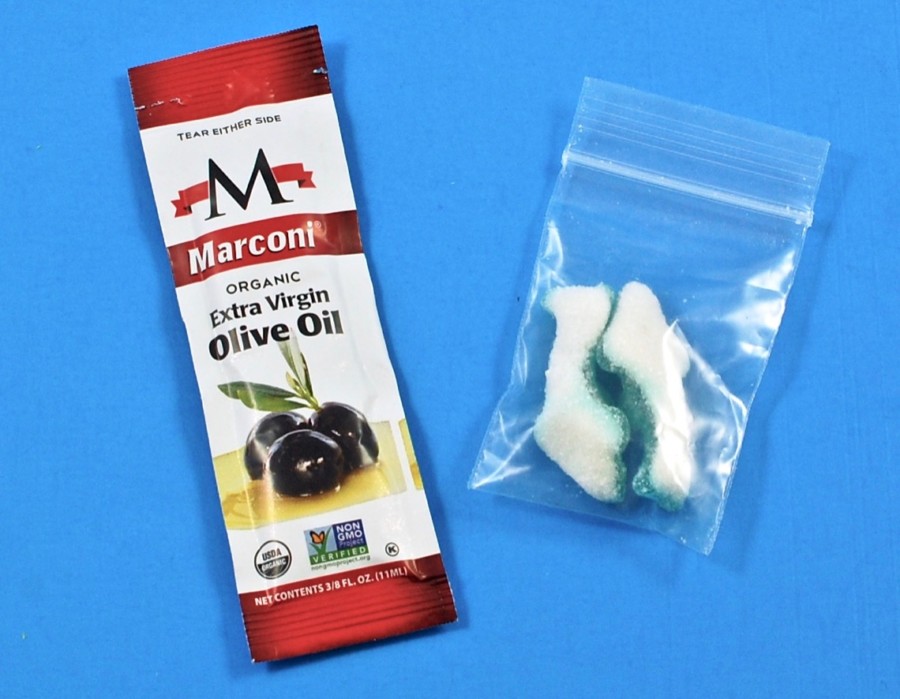
Challenge #3: Experiment with Density
The third activity had us experimenting with density. Materials included two gummy sharks, a packet of olive oil, and a plastic bag.
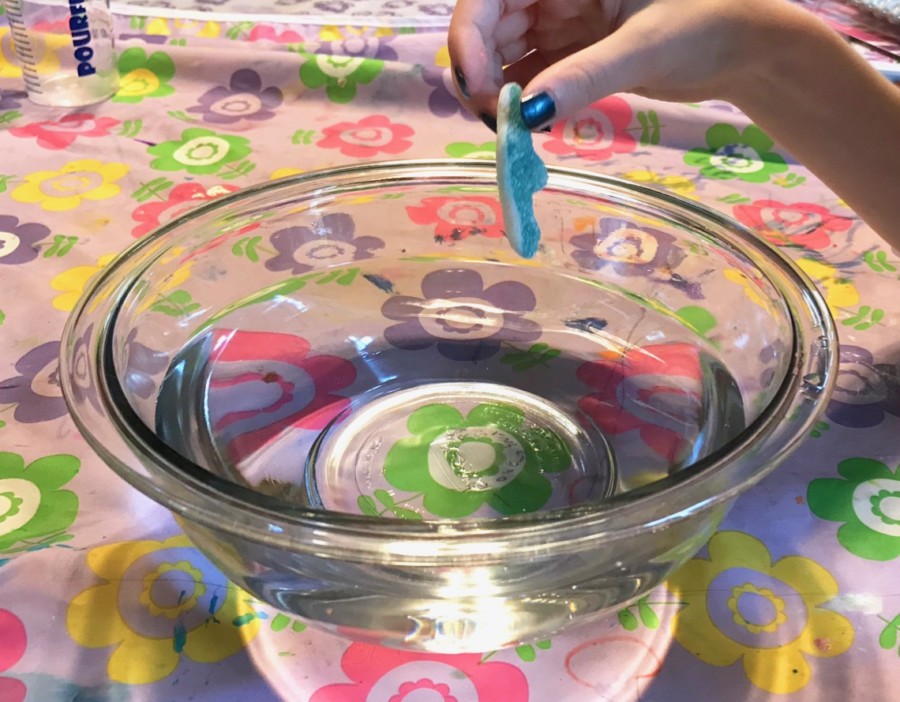
First, we filled a bowl with water and dropped one of the gummy sharks in to see what it did…
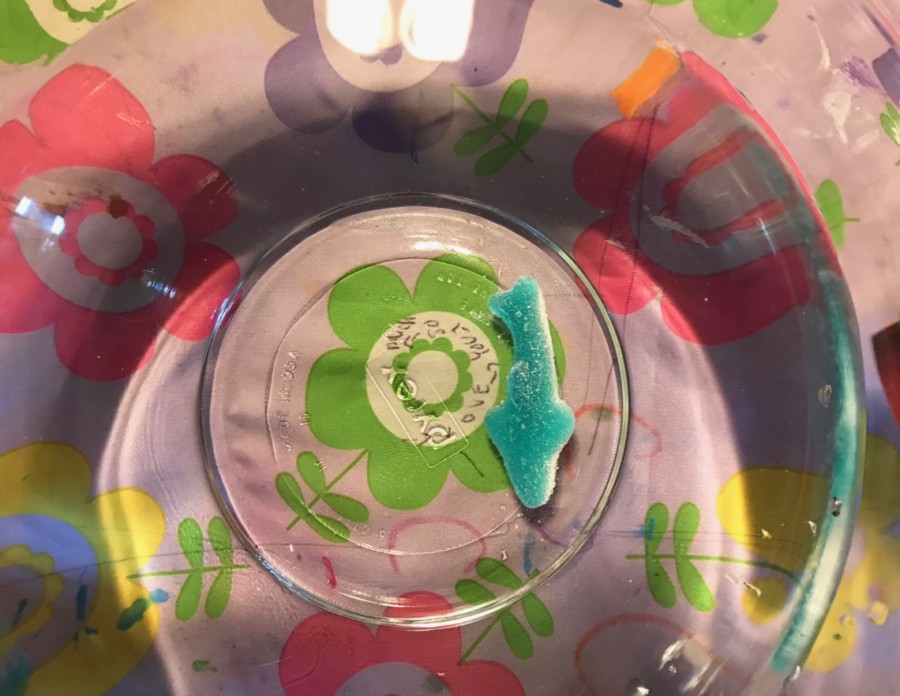
…and it sunk right to the bottom.
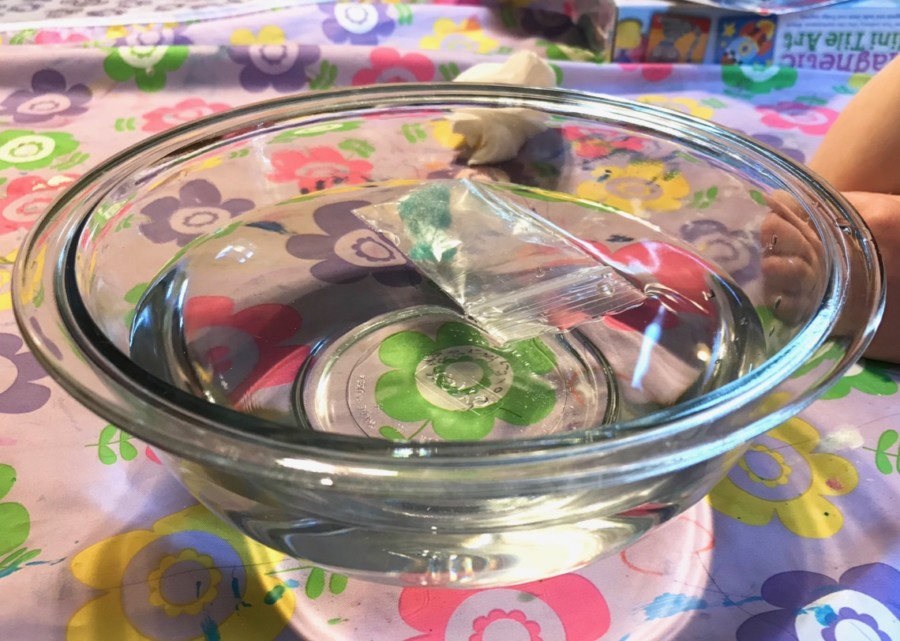
Next, we left the second gummy shark in the bag and filled the bag with air. We dropped it in the bowl and the shark/bag floated on the surface. Fish actually have air bladders inside them to help them float. Sharks, however, do not. So how do they not sink like the first gummy shark? Read on! 😉
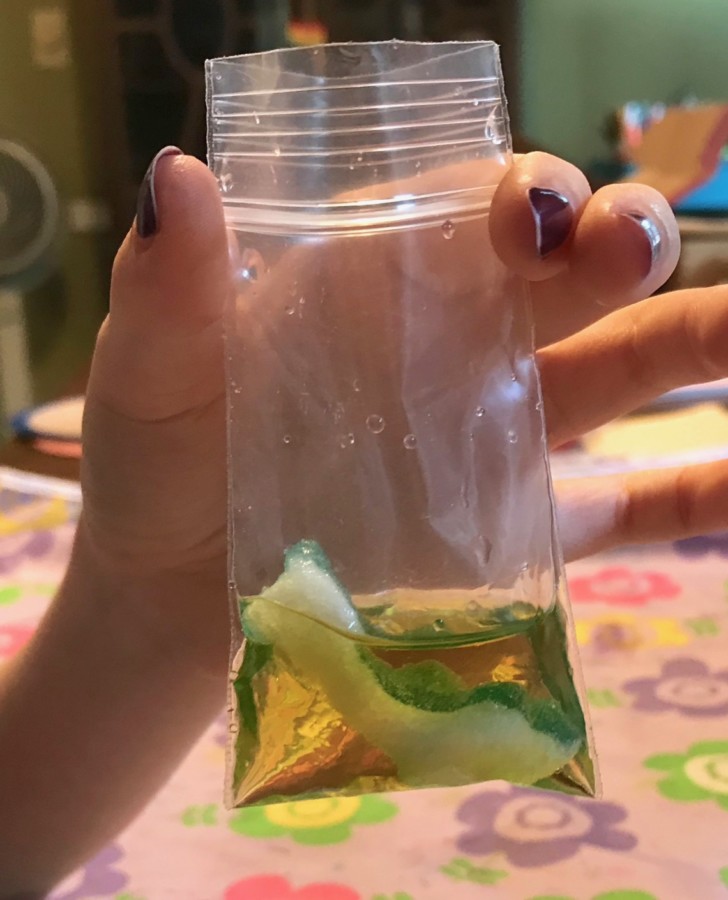
For the final part of the experiment, we took that same air-filled bag and poured the oil packet inside. Before sealing it, we squeezed the rest of the air out by pressing down on the bag.
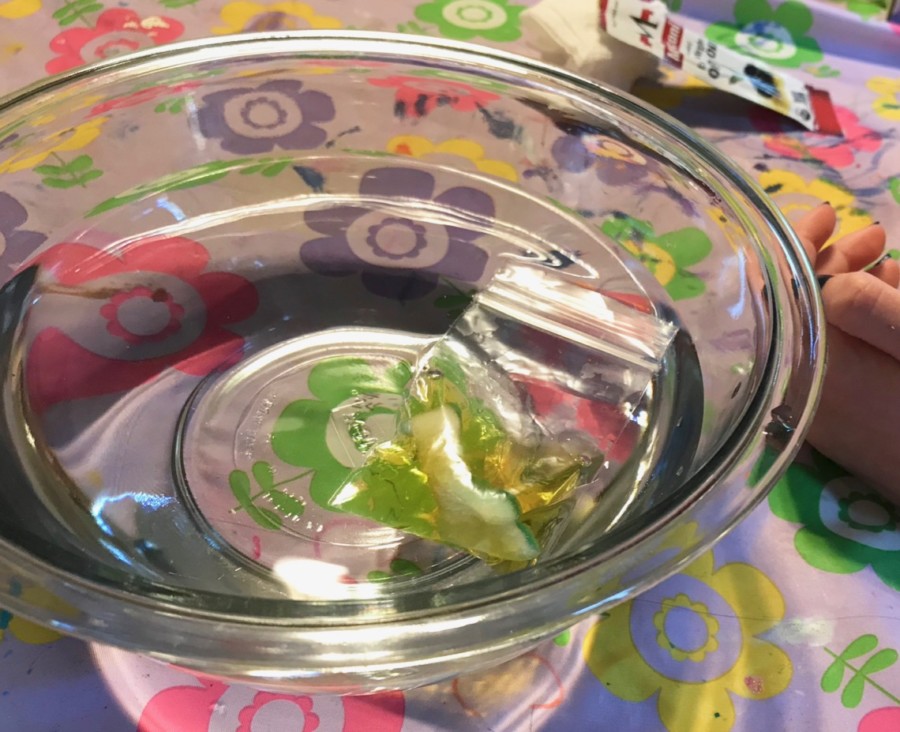
We dropped the oil/shark-filled bag into the water and watched as it floated to the surface. — We learned that sharks have a large liver made up of fats & oils that takes up almost 30% of their body. Just like the air bladders in fish, these oily livers help to keep the sharks afloat!
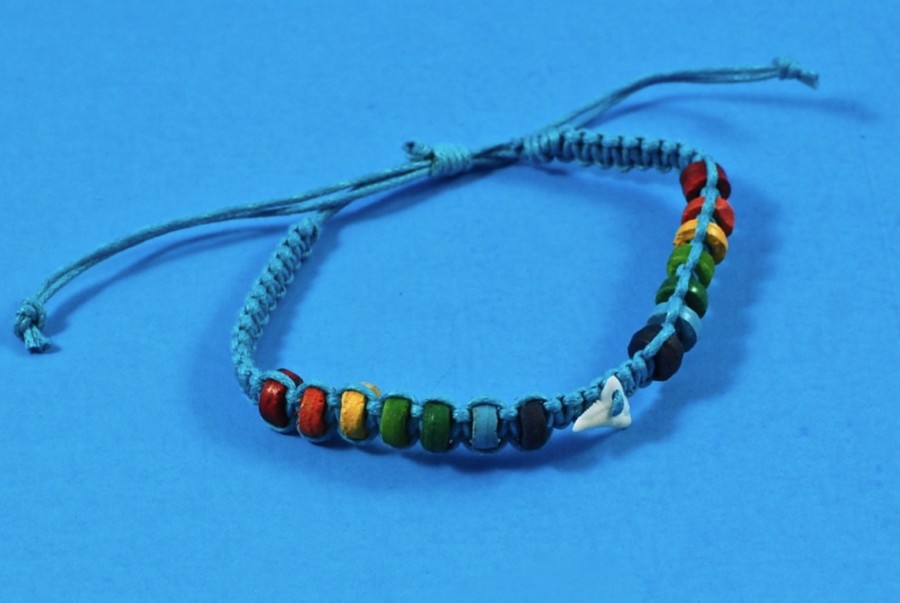
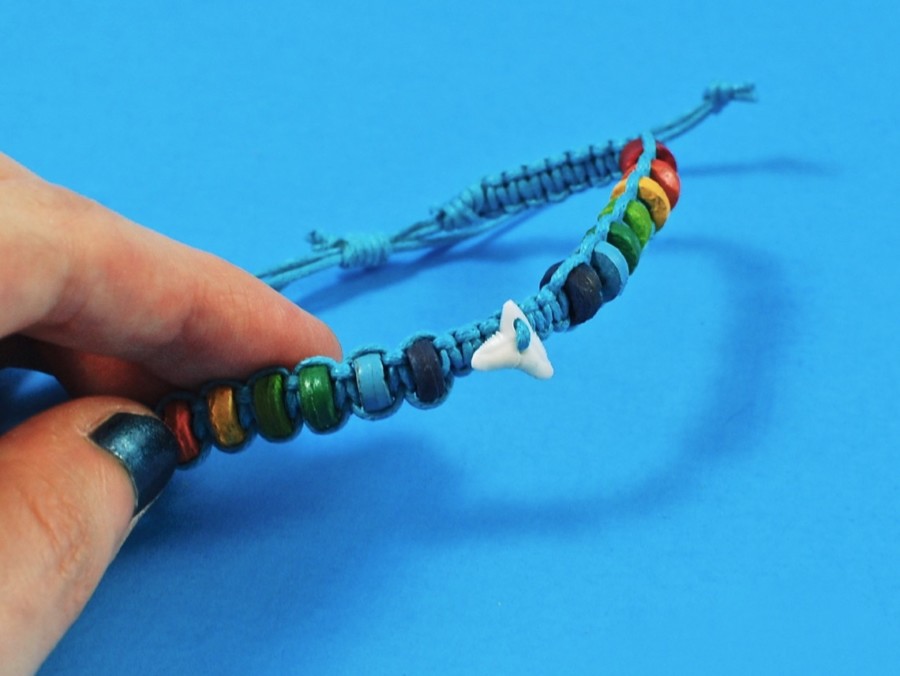
In addition to the activities this month, we also received a cool beaded bracelet with a tiny “shark tooth” charm in the center. Cute!
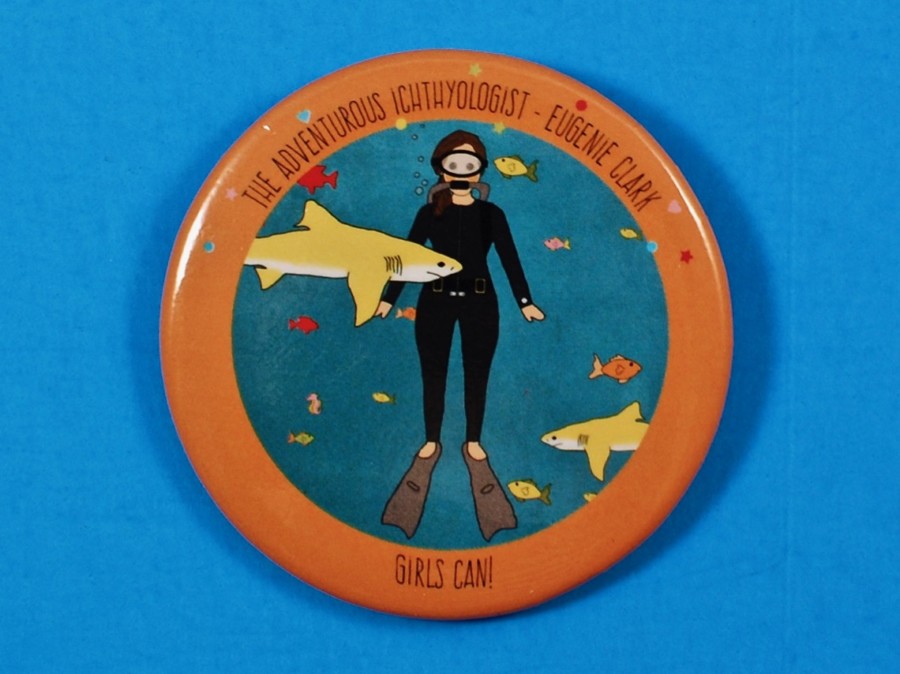
Once all of the activities were complete, we had officially earned our Eugenie Clark collectible button.
July’s Girls Can! Crate was a lot of fun. We enjoyed learning more about sharks and how Eugenie Clark helped the world to better understand them. 🙂 — Remember for a limited time, you can save 20% on your first month with coupon code “WELCOME20“!

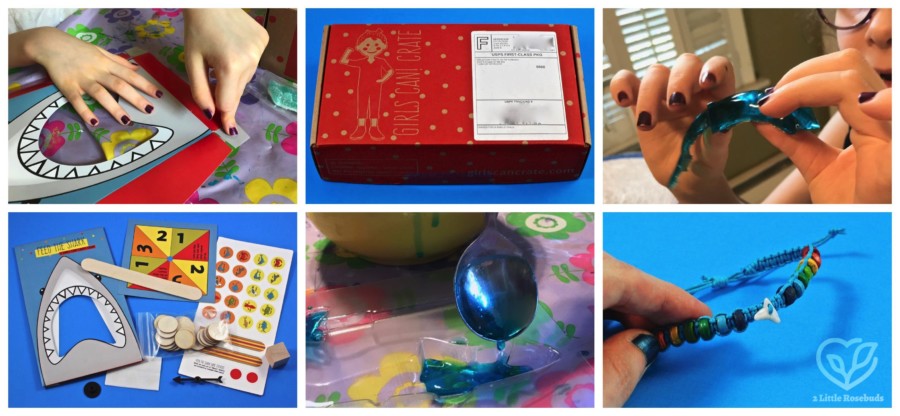

Leave a Reply